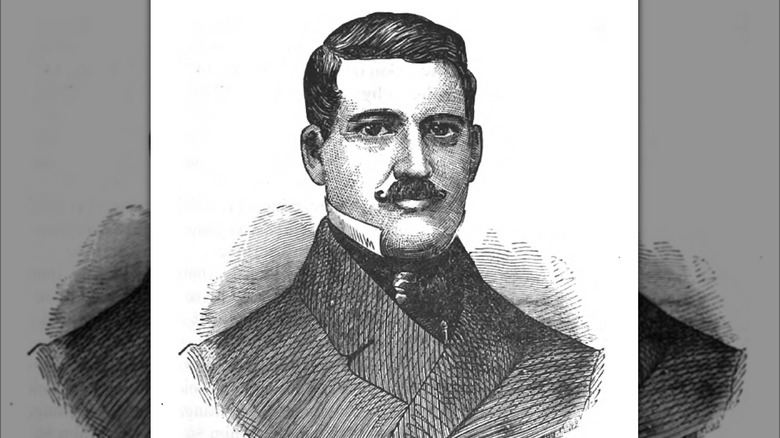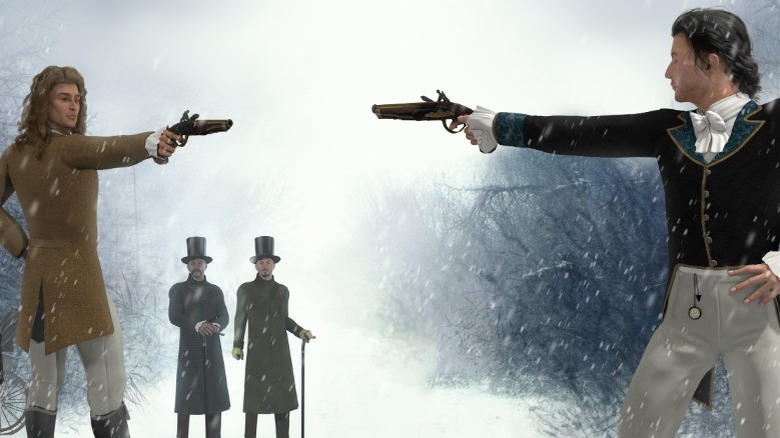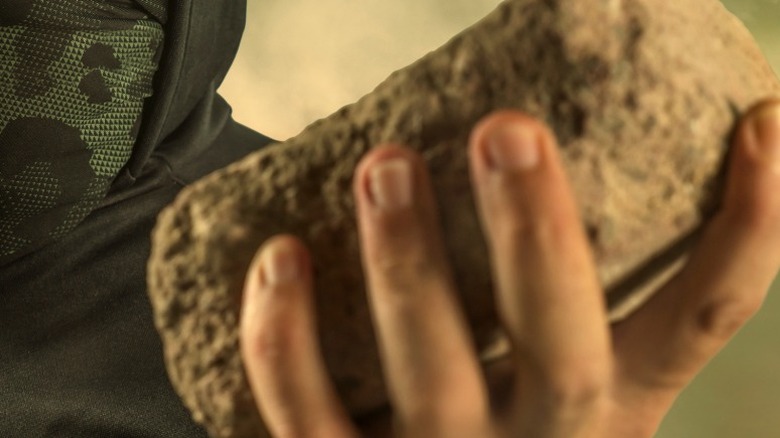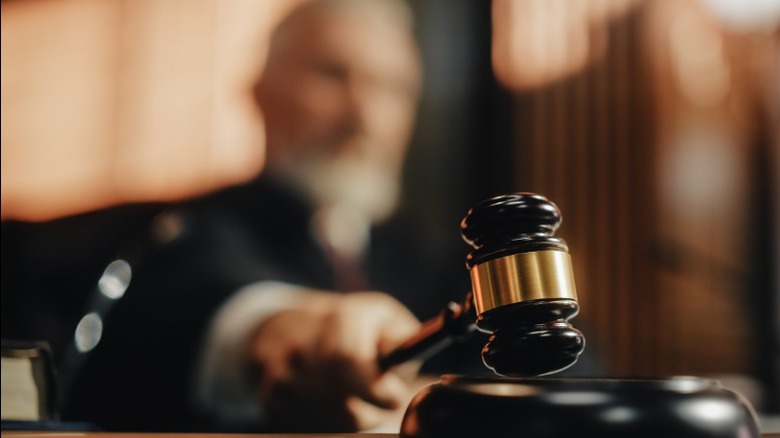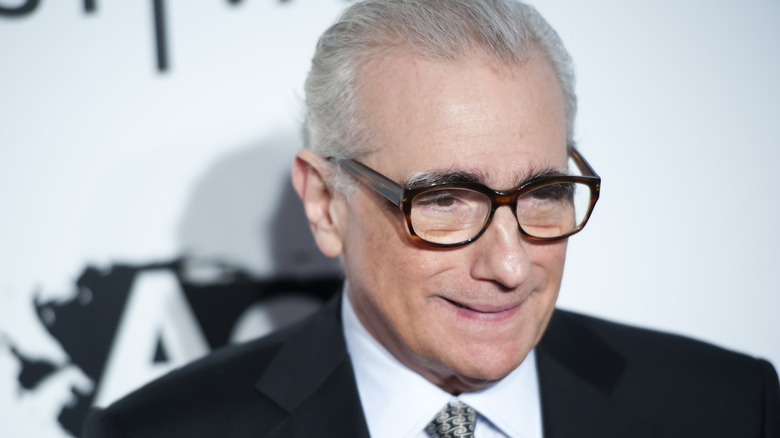The Brutal 1855 Murder Of The Real-Life Bill The Butcher
Though some might believe that anti-immigrant factions in the United States are a new phenomenon, history proves that there have been groups that have opposed immigration onto this nation's soil since its beginnings. This fervor was in full swing in the mid-19th century, even inspiring a political party to form and field some electable candidates for national office.
At that time, politics in New York City was dominated by Tammany Hall, a group dedicated to staying in power by building a strong and loyal base of newly arrived immigrants (per Historic Mysteries). The sizable number of Catholics among their ranks didn't sit well with some die-hard Protestants. The Know Nothing Party was formed in response to the large waves of immigrants pouring into the United States, who were able to elect several dozen members to the national Congress. The party capitalized on the bigotry of many Americans and was led in New York by a man named Bill "The Butcher" Poole.
Tammany Hall had elected Irish-American John Morrissey to lead them. He and Poole faced off several times in the early 1850s, beginning with both men being on opposite sides of the 1854 New York mayoral election. Tammany Hall's victory in this race only fueled the hatred between it and Poole's unified Know Nothing Party, also known as the Native American Party.
Poole is shot
The rivalry between Bill Poole's Native Americans and the lads from Tammany Hall was coming to a head. A fight broke out between the two groups at a bar on Canal Street one evening when Jim Turner (of Tammany Hall) knocked a drink out of the hand of Tom Hyer, an associate of Poole's. Guns were drawn by both sides, and warning shots were fired into the walls. By the end of the fracas, Lew Baker was beaten unconscious by Hyer, but not after severely cutting Hyer's knuckles with a knife (per Murder by Gaslight). This was only the beginning of violence between the two gangs, which would eventually lead to Poole's death.
Late one March evening in 1855, Poole entered a bar to give apologies to the bartender who had witnessed yet another brawl between the Native Americans and Tammany Hall. Soon after he walked in, he was followed by Baker, Patrick "Paudeen" McLaughlin, and other members of the rival faction. Poole was grabbed by McLaughlin, who challenged him to a fight. Poole responded by saying that he could best any one of the Tammany men in the group, one at a time. These words were met with Turner pulling out his pistol and shooting Poole in the leg. Poole and Baker then began to struggle, rolling around on the floor. At one point, Baker was able to pull out a pistol and shoot Poole in the chest.
Poole got to his feet and chased after Baker with a knife. But before he could make it to the street, he collapsed into the arms of one of his cohorts.
He lingered for days after being shot in the heart
Bill Poole had two slugs in his body from two different shooters. But the gang leader clung on for dear life. He was taken from the bar to his home to recover, but he was on borrowed time. His wounds were too severe to expect him to survive. But Poole did manage to live for two weeks before slipping away. Even with a bullet in his chest, he was conscious throughout much of his stay on his deathbed. On March 8, 1855, his strength finally gave out, and he died surrounded by several members of the Native Americans (per Murder by Gaslight).
Before he died, he is said to have told those at his bedside that he had not fired a single bullet that night, placing the blame for the fight squarely on the shoulders of Tammany Hall. He blamed John Morrissey most of all. His last words were recorded as (per Bowery Boys History), "Goodbye, boys. I die a true American!"
Poole's heavily attended funeral became quite the spectacle
It's said that those who live by the sword, die by the sword. These words fit Bill Poole like a glove. In a bizarre epilogue to his story, even his funeral yielded a good amount of violence as his mourners clashed with his detractors. When Poole died, Bowery Boy History reports that his funeral was attended by thousands of admirers. His coffin, draped in an American flag, was carried via a horse-drawn carriage through the streets to the Green-Wood cemetery. On the side of this hearse were his immortal last words, "I die a true American."
The procession of more than 150 carriages was watched by the throngs of people who lined the streets and clamored to the rooftops to view the final journey of the Native Americans' leader (per Bowery Boy History). It's reported that the weight of one of these buildings collapsed under the weight of the mourners and killed four of them (per Murder by Gaslight).
These four procession attendees were not the only ones subjected to violence that day. John Morrisey, perhaps still a little sore at Poole, organized several gangs to attend as well. A group of Short Boys and the "Original Hounds" Engine No. 36 banded together along the route and pelted the mourners with a hailstorm of rocks, bricks, and other projectiles.
What happened to the men responsible for his death?
No good deed goes unpunished, so the adage goes. After Bill Poole's death, all involved parties were apprehended by authorities in New York except for Lew Baker, who fled the city and hopped on a ship bound for the Canary Islands (per Murder by Gaslight). But Baker's luck ran out when a private citizen funded a clipper ship to catch up to the brig that carried the fugitive, leading to his arrest in Teneriffe. He was brought back to New York, where he was indicted along with seven other defendants that were charged with the shooting death of Poole.
History of Yesterday explains how the jury heard witness testimony about how Poole and his gang members had threatened and terrorized the defendants, though others put on the stand gave statements in support of Poole. In the end, the jury could not return a unanimous verdict, and seven of the defendants were released. Baker was tried two more times for the murder of Poole. The two subsequent trials yielded the same result as the first, ending in a hung jury. After the third trial, Baker was not recharged and became a free man.
A character based on Poole was central to the 2002 film Gangs of New York
A character as interesting as Bill Poole didn't go unnoticed by Hollywood. In 2002, legendary filmmaker Martin Scorsese brought a likeness of the 19th-century leader of the Bowery Boys to life in a big-budget feature film (per IMDb). "Gangs of New York" starred Daniel Day-Lewis as Bill "The Butcher" Cutting, the leader of a gang of Protestant New Yorkers called "The Protestant Confederation of American Natives." He is pitted against Amsterdam Vallon (played brilliantly by Leonardo DiCaprio), the son of a rival gang leader that "The Butcher" had killed years before.
The film was a smash hit at the box office, bringing in receipts totaling nearly $200 million worldwide during its theatrical release (per Box Office Mojo). Touted as a historical drama, many of the elements of the film, including the Civil War draft riots, were based on actual events. Hollywood did take some poetic license with the characters, however, especially when it came to Lewis' character Cutter. Aside from the obvious deviation from his real name, the film altered significant details about his death and when it occurred. The real Poole did not make it to see the United States break out into a Civil War, having died a full six years before the first shots were fired at Fort Sumter in 1861. The Hollywood version of Poole was killed by Vallon in 1863.
